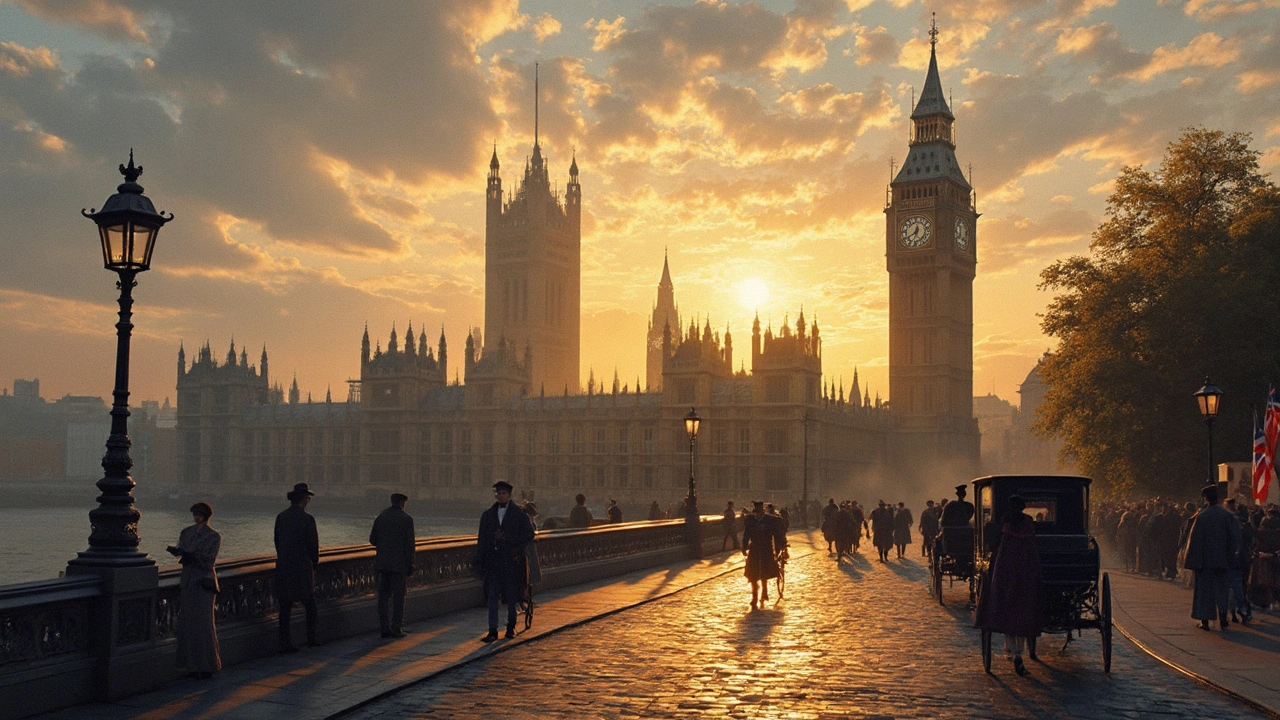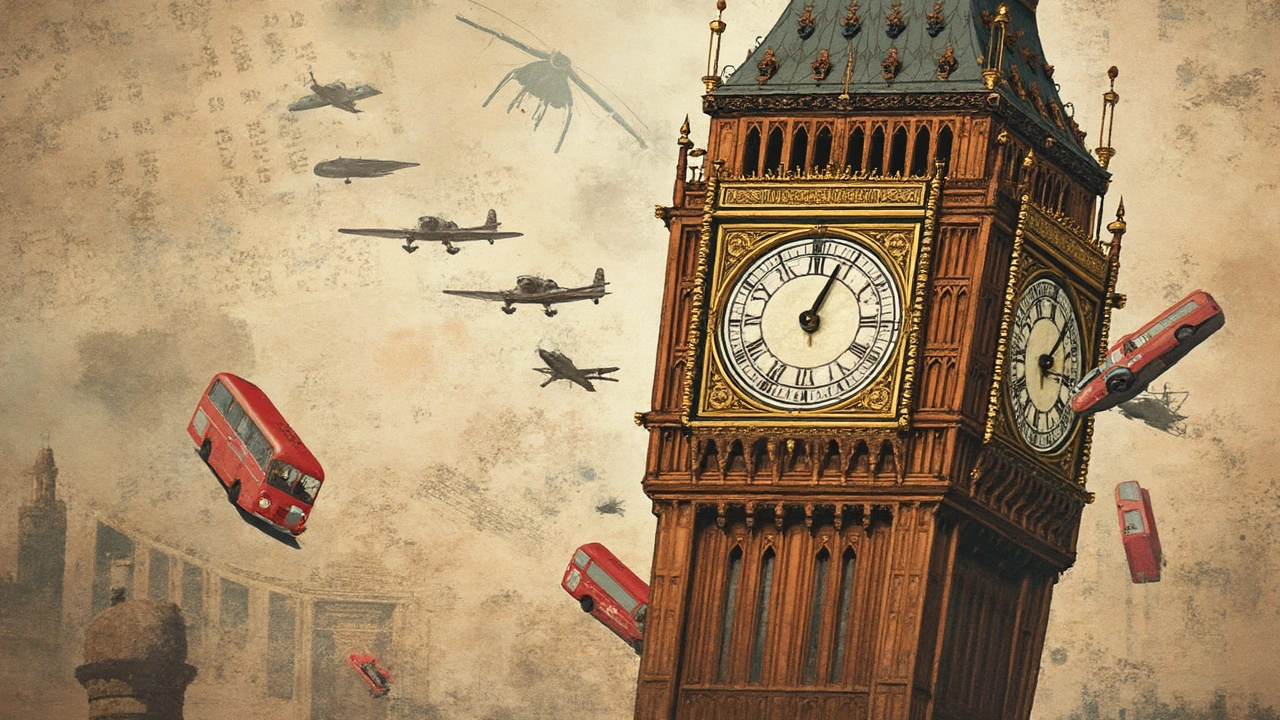Tick Tock: The Fascinating History of Big Ben

Just imagine, it's the mid-19th century and London is buzzing with activity. That's when Big Ben was born—not just as another clock, but as a grand symbol perched atop the Houses of Parliament. Standing tall, it's witnessed incredible slices of history, from its completion in 1859 to becoming a global emblem of precision timekeeping.
What makes Big Ben truly fascinating isn't just its gigantic bell or its towering presence. It's the story behind every tick and tock. Got a few minutes? Stick around and I'll take you through how this monument came to be, the brains behind its creation, and some unexpected facts that might just surprise you.
- Birth of a Legend: Building Big Ben
- The Architects Behind the Icon
- Keeping Time: Big Ben in Modern Culture
- Quirky Facts and Timekeeping Tricks
Birth of a Legend: Building Big Ben
Big Ben, sitting atop the Elizabeth Tower at the north end of the Palace of Westminster, is more than just a famous clocktower; it's a piece of London's spirit. The journey to its creation kicked off in 1834 when a fire devastated the previous Palace of Westminster. This disaster paved the way for the redesign and reconstruction, eventually leading to the creation of Big Ben.
The design plans for the new palace were handed out after a public design competition. Charles Barry, the architect behind its overall design, teamed up with Augustus Pugin, a Gothic architect, who was responsible for the distinctive clock tower we see today. Their collaboration brought a magnificent blend of Gothic Revival style architecture that still commands awe.
The construction of Big Ben was neither quick nor simple. The foundation hole was dug in 1843, and it took years of diligent work, not to mention a small load of parliamentary debates and funding issues, before the clock tower was completed in 1859. Standing at 96 meters high, the structure required meticulous work, with a clock face over 7 meters in diameter that featured intricate Victorian details.
The great bell—what most people mistakenly call Big Ben, was cast in 1858. Funny enough, the original bell cracked, leading to its recasting. So next time you're in London, remember that the bell ringing out is actually its second version.
Let's not forget what's inside. The clock mechanism is an engineering marvel of its time. Designed by Edmund Beckett Denison, the clock uses a small stack of old pennies as pendulum weights to regulate its timing, ensuring it remains one of the most accurate in the world.
Big Ben isn't just steel and stone. It's stood through wars and witnessed history unfold. It's a legend born from craftsmanship and resilience, a must-see on any London bucket list.
The Architects Behind the Icon
When we talk about the marvel of Big Ben history, we can't ignore the genius minds who designed it. Two names pop up: Augustus Pugin and Charles Barry. These guys were like the dynamic duo of the Victorian architectural world.
Charles Barry was the mastermind behind the overall design of the Palace of Westminster. Got damaged by a fire in 1834, so he took the lead in its reconstruction. Barry had a knack for Gothic Revival style, which perfectly matched the historic vibe they wanted.
But here’s where Pugin stepped in. Barry may have sketched the big picture, but Pugin was the detail guy. All those intricate decorations? That was Pugin’s specialty. He went all out with the intricate facades and the interior designs, giving Big Ben its iconic Gothic look.
They faced a fair share of challenges. Building something that huge wasn't just about impressive designs; it was also about solving engineering puzzles. The clock tower, holding the massive clock and London landmark, had to be strong enough to withstand the passing years and those moody London weather tantrums.
Let’s be thankful for this artistic bromance because their combined expertise didn’t just build a clock. They created a symbol. Big Ben isn’t just a building; it's a masterpiece reflecting the vision and determination of two great architects who paved the way for timekeeping landmarks all over the world.

Keeping Time: Big Ben in Modern Culture
Did you know that Big Ben isn't just a clock tower? It's a bona fide celebrity in the realm of pop culture. This iconic structure has appeared in countless movies, TV shows, and even video games. Whether in high-tension terrorism thrillers or charming rom-coms, Big Ben is like that reliable supporting actor that can transform any scene with its striking presence.
Take the 1978 film, 'The Thirty-Nine Steps', where Big Ben's clock face plays a pivotal role in the climax. Talk about keeping you on the edge of your seat! Or consider TV shows like 'Doctor Who', where our favorite time-traveling doctor often flits around this majestic clock's towering structure.
London's landmark doesn't just stay confined to the big screens. It's an inspiration in the music world too. The chimes of Big Ben have been sampled in various songs, making it a part of the soundtrack of our lives. And let's not forget about its digital reincarnations! In video games like 'Assassin’s Creed Syndicate', players get to experience a virtual London, with Big Ben faithfully recreated in all its detailed glory.
Interestingly, Big Ben also plays a crucial role in New Year's Eve celebrations. That midnight chime? It's broadcast across the UK, signaling the start of the New Year. Imagine hearing those dozen bongs live—it’s like a communal heartbeat resonating across the nation!
From films to festivities, Big Ben stands tall, showing us how a clock isn't just about telling time—it's about being a silent witness to history and a vibrant part of modern culture.
Quirky Facts and Timekeeping Tricks
Ever wonder how Big Ben nails timekeeping with such precision? Well, it’s not as straightforward as you might think. The clock's accuracy is so spot-on that they've got a little trick with old-fashioned pennies. That's right—adding or removing these coins to or from the pendulum helps adjust the clock's time to stay perfect. Fancy tech might be flashy, but sometimes the old tricks still rule the game!
Speaking of quirky, Big Ben, or more accurately, the Great Bell, wasn't the original bell intended for the tower. The first bell cracked beyond repair during testing. Its replacement, the bell we hear today, was also cracked shortly after installation. So they simply rotated it a bit and used a lighter hammer—good enough to keep things chiming sweetly ever since.
Did you know that during World War II, despite London taking blitz hits, Big Ben kept ticking? Its resilience turned into a kind of morale booster for many Londoners. According to a wartime historian, "With Big Ben's steady tick, Londoners found a little piece of normality."
"Big Ben is not just a clock; it's a symbol of endurance and consistency," says historian Emily Johnson.
Here's a cool stat: the clock tower leans a bit, like London’s personal leaning tower. It tilts around 0.26 degrees to the northwest, due to ground subsidence and age. But don’t worry, it’s not going anywhere fast!
And if you're wondering about CCTV footage for clock maintenance—nope. This isn’t a job for high-tech robotics. Clocks like this one rely on old school gearheads who climb into the tower and get their hands dirty.
All these twists keep the legend of Big Ben alive—and ticking. It’s not just a clock; it's living history wrapped up in every hour, minute, and second.